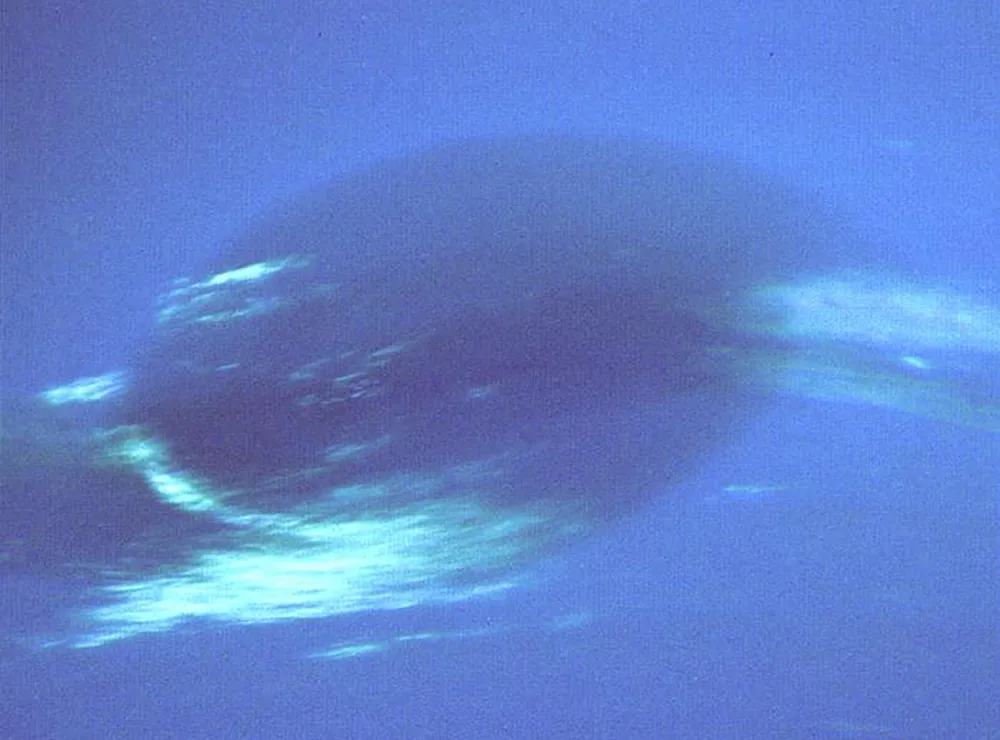
A strange dark spot has been observed drifting across the northern hemisphere of Neptune by astronomers using the Hubble Space Telescope.
The spot, which indicates the presence of a storm on the outmost planet of the Solar System, is wider than the Atlantic Ocean and was first observed by astronomers in 2018.
A year later, Hubble images showed that it had begun moving south towards Neptune's equator, where normally such storms would vanish.
However, images seen in August 2020 showed the dark spot returning towards the north: something astronomers did not expect to see.
Another smaller spot was also seen appearing temporarily near the larger storm in January 2020.
This may have been a piece of the vortex that broke off and drifted away from the larger storm.
Neptune's stormy atmosphere

Dark storms on Neptune are by no means unusual. When the Voyager 2 spacecraft flew by Neptune in 1989, it revealed Neptune's tempestuous atmosphere for the first time.
Images from Voyager 2 showed a Great Dark Spot reminiscent of the famous Great Red Spot on Jupiter.
Then the launch of the Hubble Space Telescope gave astronomers a new means to observe these spots and watch their development over time.
"We are excited about these observations because this smaller dark fragment is potentially part of the dark spot’s disruption process," says Michael H. Wong of the University of California, Berkeley.
"This is a process that's never been observed. We have seen some other dark spots fading away and they're gone, but we've never seen anything disrupt, even though it’s predicted in computer simulations."
Image stats
Observatory Hubble Space Telescope
Release date 16 December 2020
Image credit NASA, ESA, STScI, M.H. Wong (University of California, Berkeley) and L.A. Sromovsky and P.M. Fry (University of Wisconsin-Madison)
